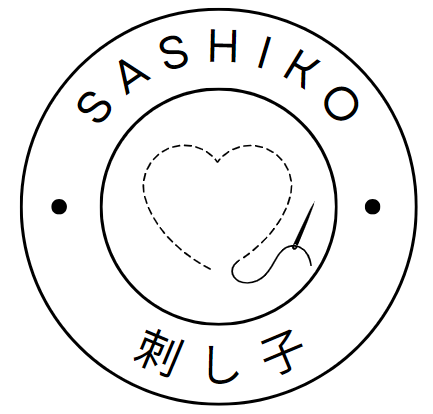1. What is Sashiko?
The technique of Sashiko originated in Japan during the Edo period and has transformed from a practical need into the beloved decorative art form it is today. The term “Sashiko” translates to “little stabs,” referencing the basic running stitch used in repeating or interlocking patterns. This art form developed from the humble lifestyle of rural Japanese farmers and fishermen. In essence, the beauty of Sashiko today can be attributed to the resourcefulness of Japanese peasant women in the 17th century.
In times of scarcity, people couldn’t afford to waste any fabric, so they repurposed it to strengthen old clothes and bedding, a technique called Boro. Through practical experience, women determined that sashiko stitching was the most effective method for this purpose. Multiple layers of fabric, cotton in warmer regions and hemp where cotton couldn’t grow, held together with sashiko stitching, offered excellent protection from the elements and prolonged the life of their textiles. They also learned that using white thread created an attractive contrast against the affordable indigo fabric of that time, giving their handmade garments a unique and individual touch.
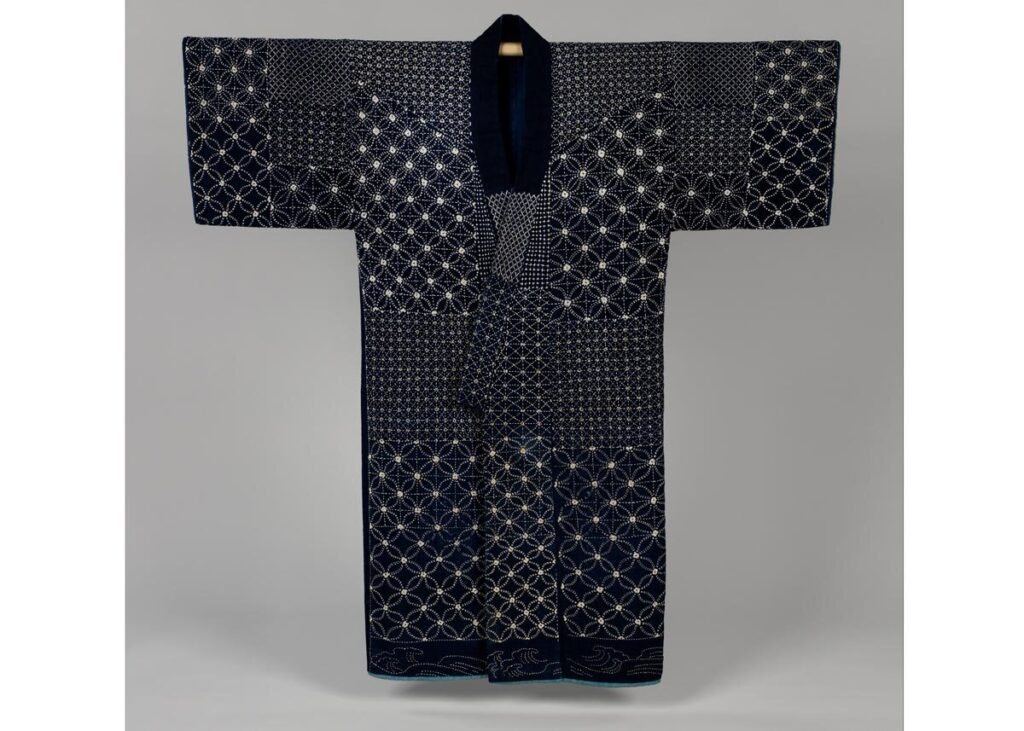
2. The History of Sashiko
The use of sashiko can be traced back to the Edo Period (1603-1867), but there are discoveries of its usage even earlier. During the Edo Period, there was a strict social hierarchy that imposed rules on using garments and textiles within each class. The working class and commoners faced limitations on the types of textiles they could use, which led communities to adopt practices focused on extending the lifespan of available fabrics. Sashiko was mainly used by working class farming and fishing families to create stronger and more practical workwear by stitching layers of old cloth onto worn-out pieces, creating sturdy garments passed down through generations. Cloth was a precious commodity during this time, and spinning fabric at home was a time-intensive task. Natural fibers like cotton, silk, and hemp were hand-spun, hand-woven, and dyed. Silk and cotton were reserved for a specific section of society and were expensive, while hemp was worn by the ordinary man but was more prone to tearing. Mending prowess became a necessary survival skill, which has evolved over the centuries from a frugal necessity into decorative stitching. By the Meiji Era (1868-1912), sashiko had become a well-established craft. Even personal protective garments, such as the firemen’s coat (hikeshibaten) during the Edo and Meiji periods, were made using the sashiko technique of stitching several layers of indigo-coloured fabric. These garments were worn wet after soaking in water before performing duties and typically featured decorative elements such as dragons, mythological heroes, and symbols of water and bravery.
3. Why is Sashiko Different From Other Embroidery Techniques?

If you’re new to embroidery, you may find the unique tools and stitching techniques surprising. Sashiko, in particular, uses tools that are distinct from those used in Western embroidery. For example, the sewing needle has a larger eye to accommodate thicker cotton thread and is longer for increased durability. Additionally, Sashiko thread is crafted differently, as it is made by twisting fine threads together to create a single, sturdier thread, unlike the multiple strands used in traditional embroidery thread.
4. What are the Different Types of Sashiko?
The women who practiced sashiko stitching were able to create motifs and patterned symbols that reflected their lives, history, families, and local cultures. Each crafter had her own unique style and adapted the designs to her preferences and needs.
Certain motifs carried talismanic meaning, as their shape and placement were meant to provide specific protection to the wearer.
The simplicity and elegance of the designs in sashiko stitching were a result of the craft being rooted in peasant culture, where efficiency was essential for conveying its meaning.
A significant characteristic of all sashiko patterns is the use of blank or “negative” space as an integral part of the overall design.
Many traditional sashiko patterns are simplified representations of elements from nature, including plants, birds, animals, as well as natural phenomena such as clouds or rising steam.
Here are just four of the most enduring traditional sashiko patterns.
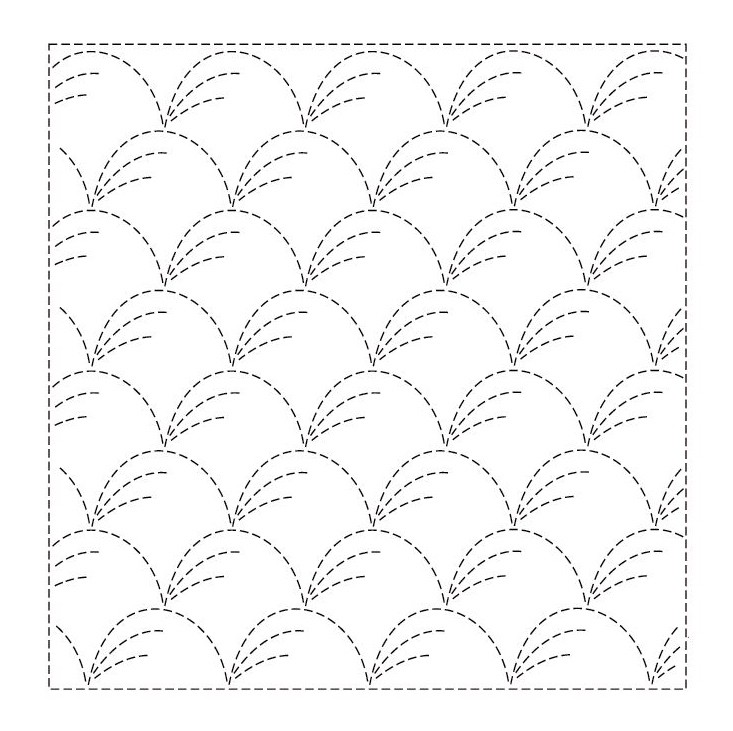
Nowaki Grasses Pattern
In this context, Nowaki refers to “windblown grasses”. This beautifully evocative sashiko pattern likely developed from coastal fishing communities. It emotively depicts the shape of dune grasses in a strong sea breeze and represents resilience and the fortified strength of one’s roots.
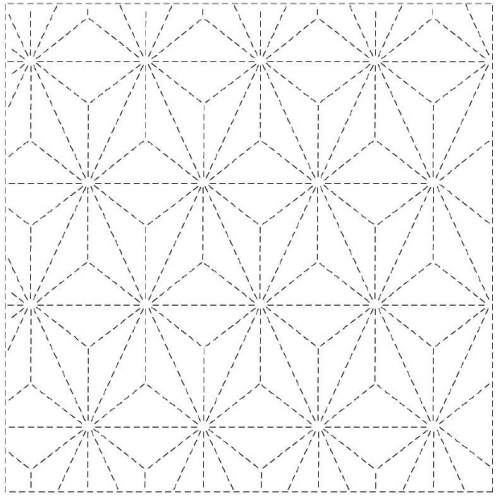
Asanoha (Hemp Leaf) Pattern
The hemp or flax leaf motif, called “asa no ha” in Japanese (asa – hemp; no – of; ha – leaf), is frequently utilized in Buddhist scrollwork to symbolize radiant light or the soul’s inner light. In Japanese tradition, it was customary for newborns to be wrapped in swaddling fabric adorned with the Asanoha design, wishing for the child’s strength and health. This pattern is widely recognized and commonly used in traditional sashiko embroidery today.
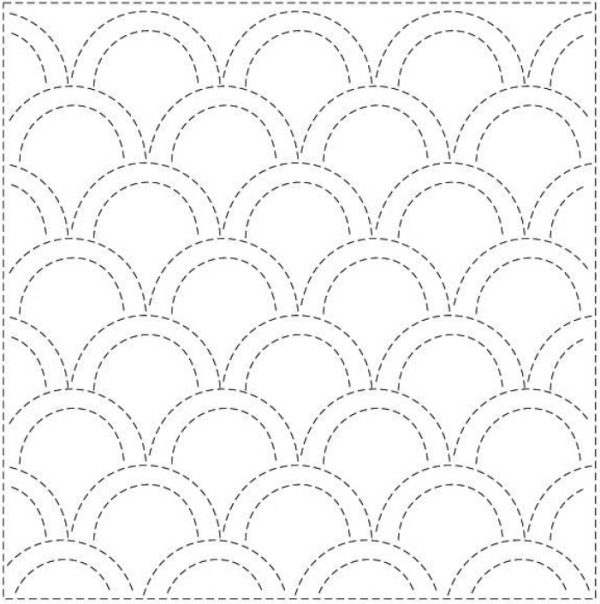
Seigaiha Pattern
The Blue Sea Waves pattern dates back to the 6th century in Japan. In sashiko embroidery, it was used as a talisman, representing “waves” of good luck.

Shippo-Tsunagi (Seven Treasures) Pattern
The Sashiko pattern known as Seven Treasures has a diverse and intricate history. Its geometric design incorporates four ellipses within a circle, creating additional circles within the pattern. The term “Shippo” is a nod to precious stones in Buddhism and reflects the gleaming appearance of the circles’ interiors. This pattern is frequently paired with flowers in sashiko embroidery. The intersecting circles in this design create a flowing geometric effect that has been used to convey enduring peace and happiness and as a charm for boundless fertility and family prosperity.
